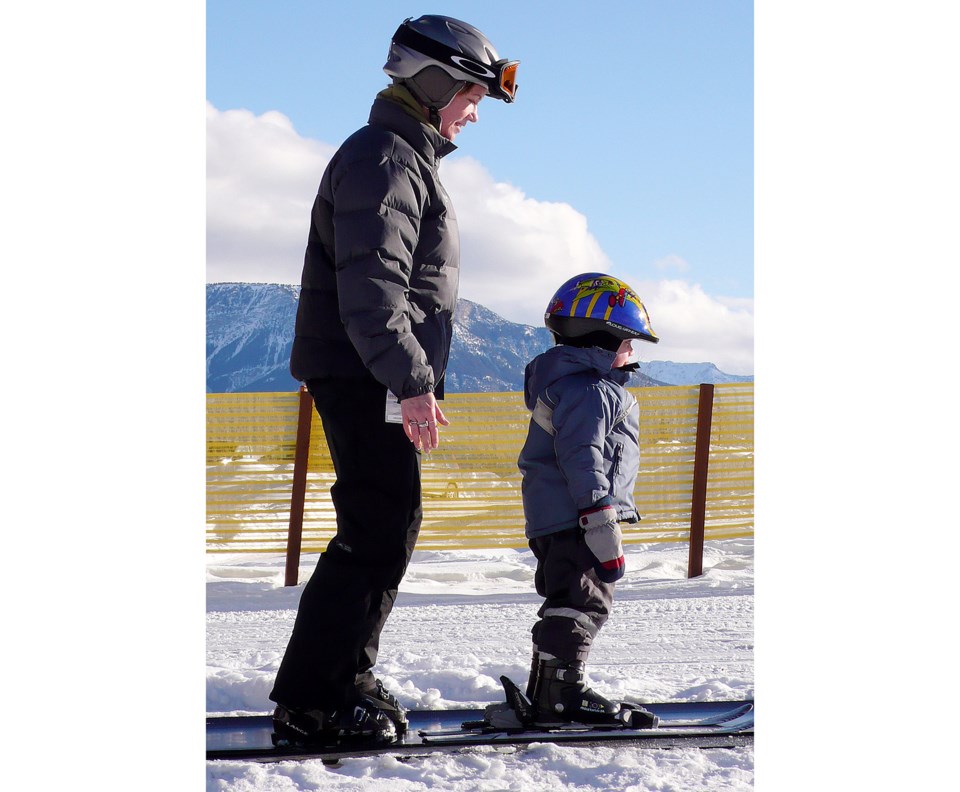Wearing a helmet while skiing or snowboarding is now the norm for kids in ski schools. As we continue the late arrival of our ski season, it’s time to check equipment and endorse safe habits together as a family.
Mountain operations do their part to deliver on-slope maintenance and enforcement of the Alpine Responsibility Code, but it is up to parents to provide the gear and life lessons.
In 2009, the Canadian Standards Association (CSA) introduced the first Canadian recreational skiing and snowboarding helmet standard in an effort to protect the growing number of participants against head injury.
Statistics show that although helmet use does not reduce the total annual snow sport fatalities, it reduces the chance of head injury by 60 per cent.
“The CSA is all about life and we want to facilitate family and individuals safety while they enjoy these sports,” said John Walter, vice president of standards development.
Cypress Mountain requires all on-snow staff and students under the age of 19 to wear a helmet. Helmets are included in student rental packages.
Kelly Kurtz, assistant manager of the Cypress Mountain Snow School, says she’s seen a significant increase in helmet usage.
“My opinion from personal experience is that helmets save lives should you get in an accident,” Kurtz said. “I was wearing a helmet when I crashed. If I had not been, the outcome would have been different. Others are not so lucky.”
Established in 1995 by Burton Snowboards, the Chill Foundation is a non-profit organization that uses snowboarding as a vehicle to provide life and character development skills to underserved youth.
Stephanie Yeatts, national manager for the Vancouver area, says helmets are essential to safety.
“Our rule is pretty simple, if you don’t wear a helmet — you don’t ride,” Yeatts said.
The other side of the debate argues that wearing a helmet encourages false confidence and thus bigger risks. In B.C., helmets are mandatory in terrain parks and competitions. At Cypress Mountain helmets are highly recommended but not mandatory for students over 19 or for the general public.
Manufacturers recommend helmet replacement every three to five years. Matt Hallat, a Canadian Para Alpine Ski Team (CPAST) athlete who competed in Sochi and spent his early training days racing on Cypress Mountain says he’s always worn a helmet. “I feel funny without a helmet. My dad never let me not wear one. It was the ski rule.”
Aside from decreasing the chance of head injury on impact, a helmet provides a warm, cushioned barrier from the winter elements. Accidents and collisions on the slopes increase if you are fatigued, so it is important to listen to your body and rest as needed.
There are no guarantees in life but the trend is education versus legislation with hopes that eventually all Canadians will use a helmet.
Parents must provide proper protection and set family rules that will eventually be as automatic as using a seat belt. Helmets are cool. Everyone in your family should be wearing one.
•••
Stephanie Florian is always chasing her next adventure and plays with her family in the mountains and on the sea. Get in touch at playoutdoorsvancouver.ca and twitter.com/PlayoutdoorsVan.



